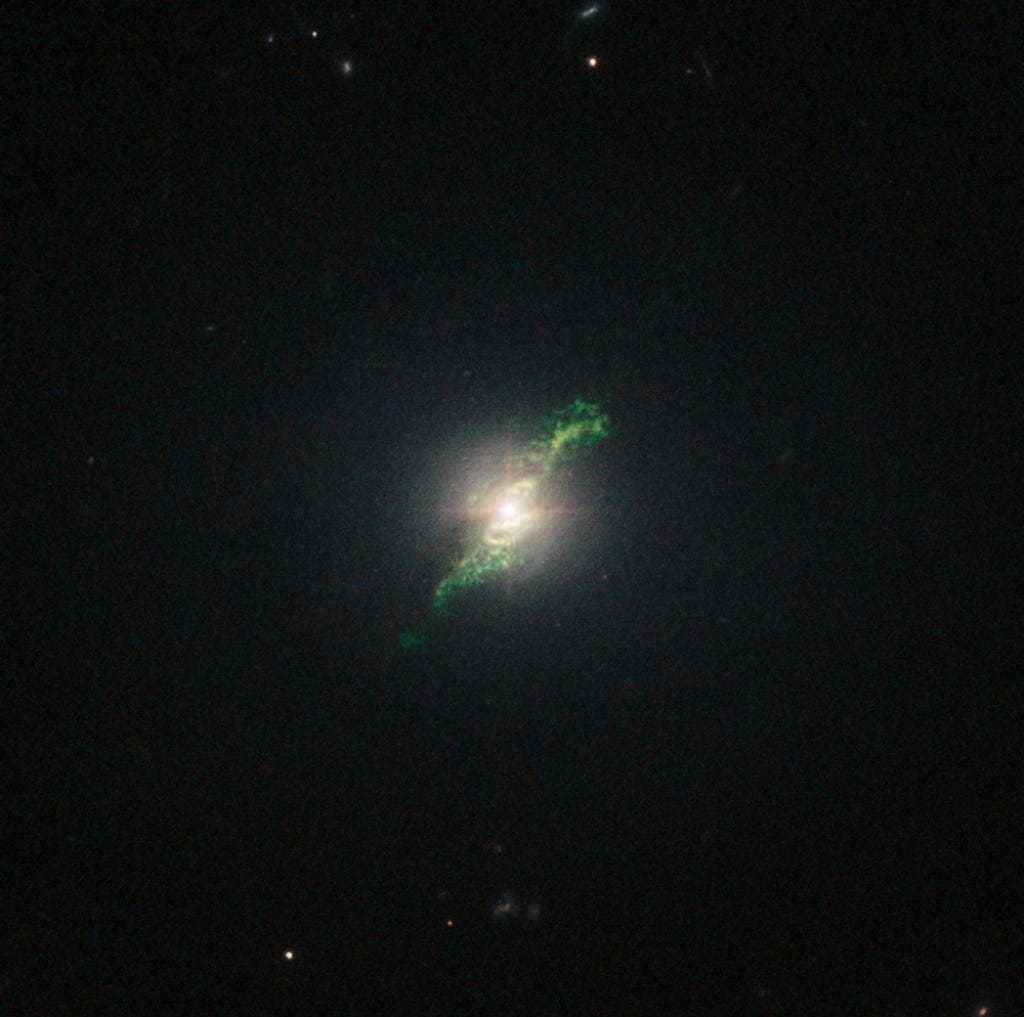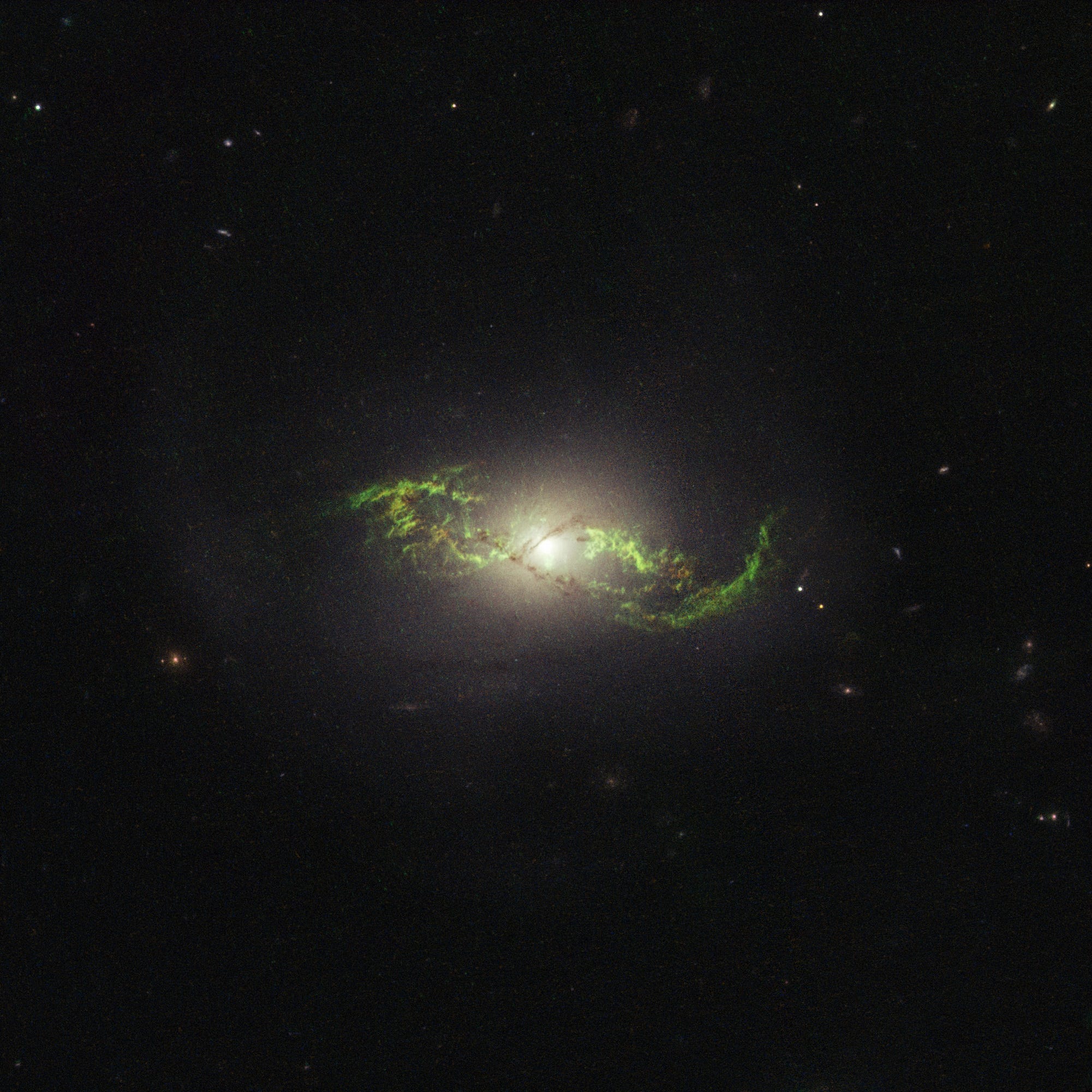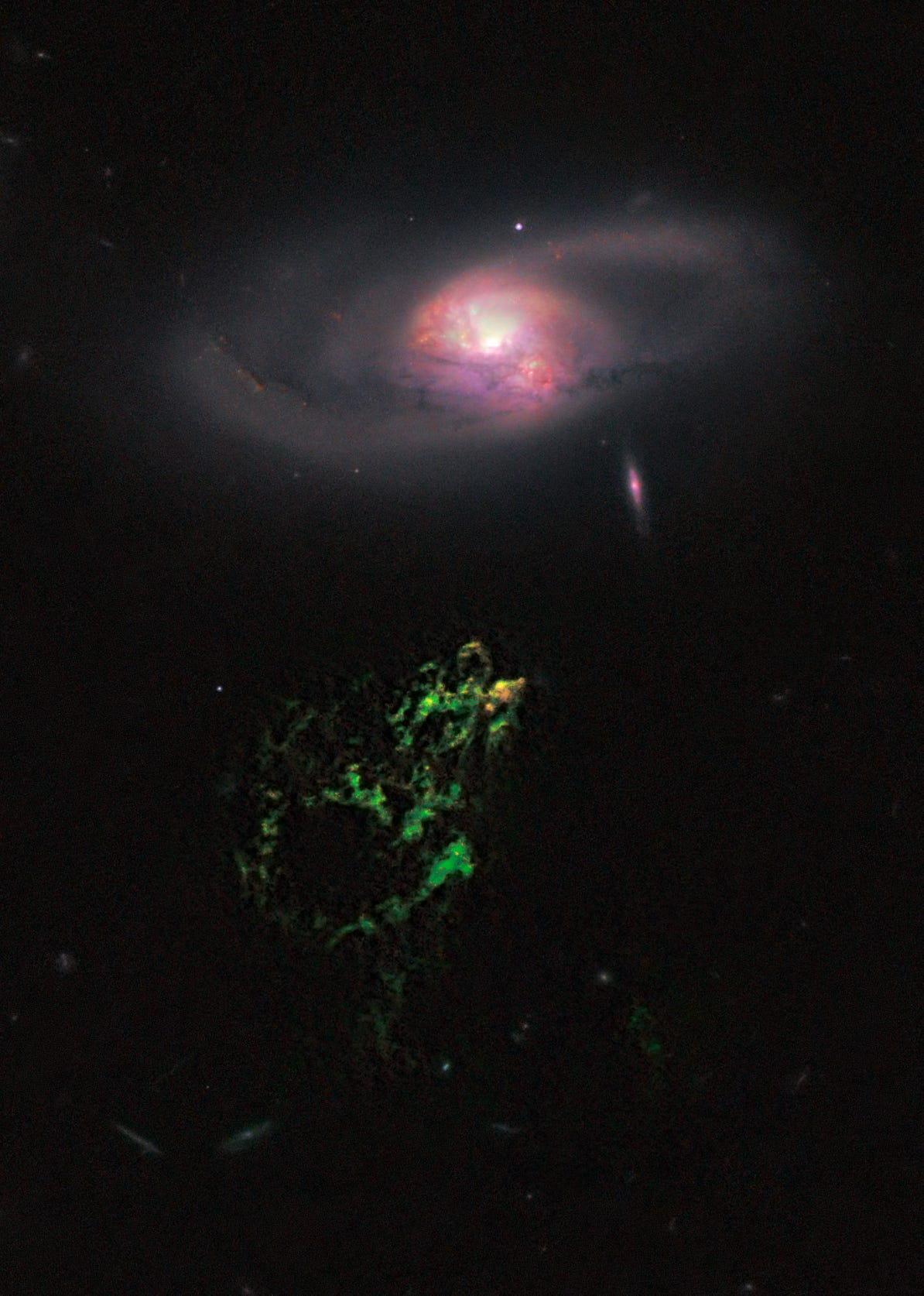Mostly Mute Monday: Space turns green on 4/20
What sort of greenery are these galaxies smoking?
“The illegality of cannabis is outrageous, an impediment to full utilization of a drug which helps produce the serenity and insight, sensitivity and fellowship so desperately needed in this increasingly mad and dangerous world.” –Carl Sagan








Even though there are no such things as green stars, these galaxies are all giving rise to what looks like green plumes of smoke emanating from their cores. But no one’s smoking anything wacky to give rise to this; it’s the result of two normal, spiral galaxies merging together — with one larger than the other — and a phenomenon that occurs briefly in the aftermath.
As the merger begins, stars, gas and dust are pulled out of the smaller galaxy into the larger one, whose black hole becomes active due to the infalling gas. The active black hole shoots out jets, one (or both, occasionally) of which ionize the elongated, extragalactic material. After the black hole ceases feeding, that ionization remains, and for a period of tens of thousands of years, sees the electrons recombine with ionized atoms. The green color is a result of transitions in ionized oxygen, the same exact atomic transition that gives rise to the green color in Earth’s aurorae. The first example was discovered by Dutch schoolteacher Hanny van Arkel in 2007 as part of the Galaxy Zoo project, and is known as Hanny’s Voorwerp, below.


Mostly Mute Monday tells the story of a single phenomenon in images, videos, and 200 words, maximum. To celebrate Hubble’s 25th anniversary, the month of April, 2015, will focus exclusively on objects imaged with the Hubble Space Telescope.
Leave your comments at the Starts With A Bang forum on Scienceblogs!





